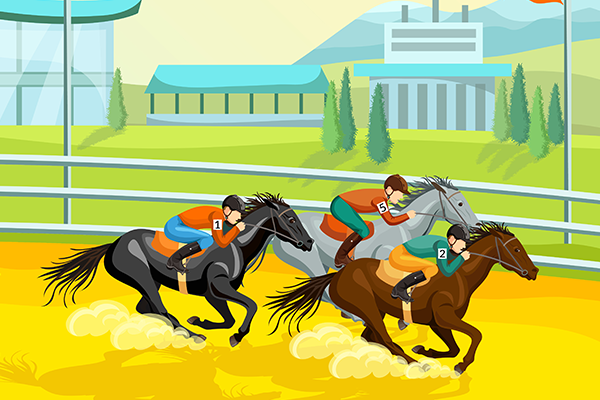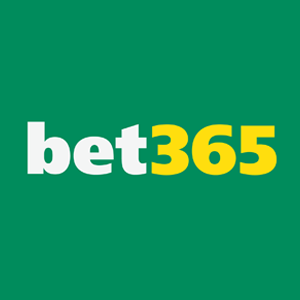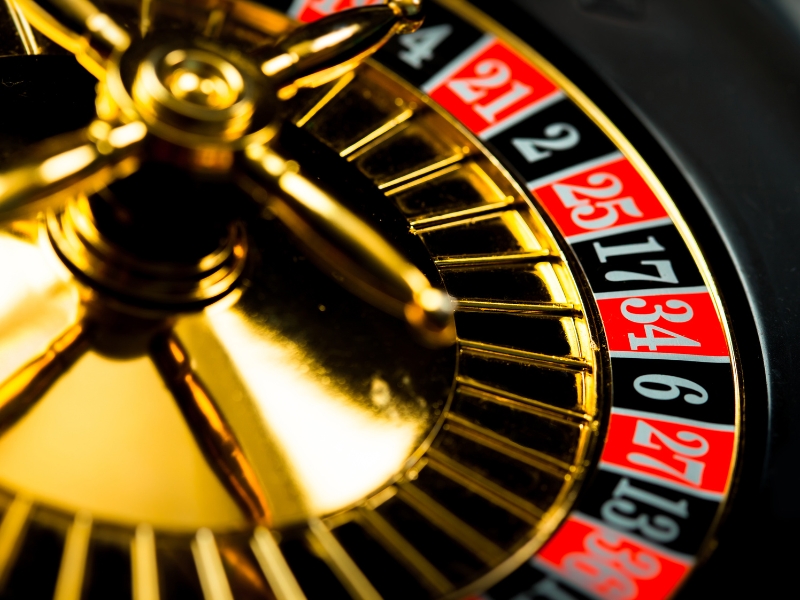What is a Dead Heat in Horse Racing?
In the electrifying world of horse racing, where speed, strategy, and sheer determination collide, there exists a term that can both baffle and thrill enthusiasts and bettors alike: the "Dead Heat." It's a moment of pure racing drama, where the line between victory and defeat blurs into a tie, leaving all in suspense.
In this article, we delve into the fascinating world of Dead Heats in horse racing, exploring what they are, how they occur, and what they mean for both the sport and those who wager on its exhilarating outcomes. So, fasten your seatbelts as we embark on a journey to unravel the mysteries of Dead Heats on the racetrack.
What is Dead Heat in Horse Racing?
In horse racing, a "Dead Heat" is a term used to describe a situation in which two or more horses finish a race in an exact tie, and it is impossible to determine which one crossed the finish line first. When a Dead Heat occurs, the outcome of the race is shared among the tied horses.

Here's how a Dead Heat works in horse racing:
- The Finish Line: In a horse race, there is a clearly defined finish line that marks the end of the race.
- Tied Finish: A Dead Heat occurs when two or more horses reach the finish line so closely together that the naked eye, video footage, or photo finish technology cannot determine which horse crossed the line first.
- Shared Outcome: In a Dead Heat situation, the tied horses are all considered winners of the race. Instead of one horse being declared the sole winner, the victory is shared among the horses involved in the Dead Heat.
- Payouts: Payouts to bettors are adjusted accordingly. For example, if you placed a bet on one of the horses involved in the Dead Heat to win, your winnings would be divided among the winning horses. The total payout is determined by dividing the original odds by the number of winning horses.
- Placing and Show Bets: In some cases, the Dead Heat can affect the placing and show bets as well. For instance, if two horses in a Dead Heat for first place, the next horse would be considered to have finished third.
- Stakes and Prizes: In races with significant stakes or prizes, a tiebreaker rule may come into play to determine how the stakes or prizes are distributed among the tied horses. This rule could be based on factors like photo finish timing or the position of the horses' noses at the finish line.
Dead Heats are relatively rare in horse racing, but they add an element of excitement and uncertainty to the sport. They highlight the incredible closeness of the race and the exceptional athleticism of the horses involved. It's important for both bettors and race officials to be prepared for the possibility of a Dead Heat and to understand how it affects the outcome and payouts of a race.
How Are Payments Determined In Dead Heats?
Payments in Dead Heats in horse racing are determined based on a specific formula that divides the total winnings among the tied horses and adjusts the payouts for bettors accordingly. Let's explore this with a detailed example:
Scenario: Imagine a horse race with three horses: Horse A, Horse B, and Horse C. Bettors have placed bets on these horses to win, and the odds for each horse are as follows:
- Horse A: Odds of 5/1
- Horse B: Odds of 4/1
- Horse C: Odds of 7/1
The total pool of money wagered on the race is $10,000.
Outcome: As the race concludes, the photo finish reveals that Horse A and Horse B have finished in a Dead Heat for first place, while Horse C finishes third.

Calculating Payouts:
To determine the payouts for each winning horse and the bettors, follow these steps:
1. Calculate the total payouts if there were no Dead Heat:
- Horse A: $10,000 (total pool) / 6 (odds of 5/1 + 1) = $1,666.67
- Horse B: $10,000 (total pool) / 5 (odds of 4/1 + 1) = $2,000
- Horse C (third place): $10,000 (total pool) / 8 (odds of 7/1 + 1) = $1,250
2. Since Horse A and Horse B are in a Dead Heat for first place, combine the payouts for those positions:
- Combined payout for Horse A and Horse B: $1,666.67 (Horse A's payout) + $2,000 (Horse B's payout) = $3,666.67
3. Calculate the adjusted payout for each horse in the Dead Heat:
- Each horse's adjusted payout = Combined payout for Horse A and Horse B / 2 (number of tied horses)
- Adjusted payout for Horse A and Horse B: $3,666.67 / 2 = $1,833.33
4. Determine the total payout for each winning horse:
- Total payout for Horse A: $1,833.33 (adjusted payout) + $1,250 (third place) = $3,083.33
- Total payout for Horse B: $1,833.33 (adjusted payout) + $1,250 (third place) = $3,083.33
Payouts for Bettors:
- If a bettor placed a $100 bet on Horse A to win, their payout would be $100 (bet) x ($3,083.33 / $1,666.67) = $184.99.
- Similarly, a $100 bet on Horse B to win would also yield a payout of $184.99.
In this Dead Heat scenario, both Horse A and Horse B share the winnings equally, resulting in adjusted payouts for bettors. Understanding how Dead Heats are calculated is essential for bettors, as it impacts the potential returns on their wagers when multiple horses finish a race in a tie.
Calculation of Your Profit or Loss on a Dead Heat Outcome
The examples above are just exceptional cases in a series of different variations that dead heat can affect the outcome of horse races. Therefore, if you are looking for the most accurate formula to calculate profit for all cases of dead heats, you can refer to the following recipes:
|
For win markets with two runners tied: [(Stake / 2) ) x (Odds - 1)] - (Stake / 2) = your profit/loss For win markets with more than two runners tied: [(Stake / No of tied runners) x (Odds - 1)] - [Stake x ( No of tied runners - 1) / No of tied runners] = your profit/loss For place markets: [(Stake x No of payouts / No of tied runners) x (Odds - 1)] - [Stake x (No of tied runners) runners - No of payouts) / No of tied runners] = your profit/loss |
Do Sportsbooks Ever Use Dead Heat Rules to Their Own Advantage?
Top sportsbooks and bookmakers operate under established rules and regulations, which include guidelines for handling Dead Heat situations in sports betting. These rules are typically designed to ensure fairness and transparency in betting outcomes, and they are applied consistently to all bettors. Sportsbooks are not known to use Dead Heat rules to their own advantage in a way that unfairly disadvantages bettors.
Here's how Dead Heat rules work and why sportsbooks adhere to them:
- Transparency: Dead Heat rules are part of the terms and conditions provided by sportsbooks to bettors. These rules outline how bets are settled in the event of a Dead Heat. This transparency ensures that bettors are aware of the rules before placing their bets.
- Consistency: Sportsbooks apply Dead Heat rules consistently to all bets involving tied results. Whether a Dead Heat occurs in a win market, place market, or any other type of bet, the same rules are followed for all bettors.
- Fairness: Dead Heat rules are designed to ensure that bettors are treated fairly in situations where multiple competitors or outcomes share a position. The rules aim to divide the winnings equitably among the tied selections.
- Regulatory Compliance: Sportsbooks are subject to regulatory oversight in many jurisdictions. Adhering to established rules and ensuring fair treatment of bettors is a key requirement for maintaining a valid and legal sports betting operation.
- Customer Trust: Sportsbooks understand the importance of building and maintaining trust with their customers. Consistently applying fair and transparent rules, including Dead Heat rules, is essential for building trust and a positive reputation.
While sportsbooks have clear rules for handling Dead Heat situations, it's always advisable for bettors to familiarize themselves with these rules before placing bets. This helps bettors understand how their wagers will be settled in the event of a tie and ensures that there are no surprises when collecting winnings or dealing with losses.
FAQs
We have compiled some of the most common questions from players related to the dead heats. Therefore, if you have any questions after reading our article, your questions can completely fall into the group below. Just click on each question, and the answer will appear right below them.
What happens if more than two horses finish in dead heat?
Although quite rare, it is possible. Regardless of the number of runners involved in a tie, everything is shared between the parties involved, from the competitor's performance to the bettors' payback. Therefore, no matter the situation, you are always treated fairly by the operator with other bettors through sharing the winnings.
What odds do you get for a dead heat?
The simplest way to sketch out how to calculate your odds regarding dead heat in horse racing is that they will be divided by the number of runners involved in a tie. For example, if two horses reach the finish line at the same time, you will receive half of your winnings. If the dead heat consists of three horses with similar achievements and shares the same leaderboard position, you will get 1/3 odds.
What happens to combo bets if there is a dead heat?
The answer is that dead heat bets always work no matter how you bet the accumulator. For example, if your selection is part of a parlay and the final result falls in a dead heat, that part of your bet will be counted as winning, and your entire parlay bet will remain at its value.
Do bookmakers use dead heat rules to their advantage?
In fact, operators both have no need and no way to do it. The reason is straightforward. If they cheat users just to exchange for a small profit and be found out, all their reputations will be ruined. Plus, all licensed bookmakers follow the standard rules of the sports betting industry related to dead heat situations, so they cannot manipulate the odds through stealth to take advantage of players.















.jpg)




